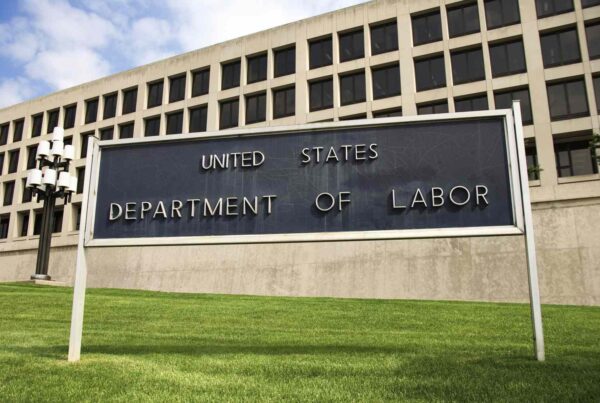
Key Takeaways
- Balances Surge: 401(k) balances rose significantly in 2023, marking a positive trend in retirement savings.
- Participation Declines: Participation rates in 401(k) plans experienced a concerning downturn, highlighting challenges in engaging employees.
- Auto-Enrollment Efficacy:Auto-enrollment emerges as a powerful tool in driving higher participation rates and fostering positive savings behaviors.
Ready to Elevate Your 401(k) Plan? Click Here to Get Started!
Discover how ‘2023 401(k) Balances Surge, Participation Declines’ reflects the latest trends in retirement savings and participation.
Balances Surge: An Overview
The average 401(k) balances overseen by T. Rowe Price saw a 14% surge last year, reaching $115,000, as detailed in the firm’s latest benchmarking report. This growth, up from an average of $101,000 in 2022, was buoyed by robust market performance, aiding accounts in rebounding from losses incurred during the previous year’s downturn.
Generational Trends
The average balance is second highest in a decade, almost reaching the peak of $124,000 in 2021. Younger participants aged 20-29 saw a significant 27% increase. Participants in different age groups also experienced gains: 30-39 (19%), 40-49 (16%), 50-59 (14%), 60-64 (11%), 65-69 (10%), and 70+ (11%).
Comparison with Fidelity
Despite these positive trends in account balances, the report reveals a concerning downturn in 401(k) plan participation—from 66% in 2022 to 63% in 2023.
Participation Declines: Insights
It’s noteworthy that over 80% of surveyed sponsors manage retirement plans under $9.9 million, indicating a predominantly small to medium-sized market. Within this context, customized strategies tailored to the unique needs and resources of each sponsor are imperative. Whether for-profit or nonprofit, sponsors must navigate distinct regulatory environments and organizational objectives.
Impact of Auto-Enrollment
Plans with auto-enrollment maintained significantly higher participation rates (83%) compared to those without it (36%), underscoring the efficacy of auto-solutions in driving enrollment and savings behavior.
Francisco Negrón, T. Rowe Price Retirement Plan Services head, emphasizes simple plan features’ impact. 2023 401(k) Balances Surge Participation Declines nurture savings habits. He reiterates T. Rowe Price’s commitment to aiding advisors, sponsors craft effective retirement plans. These plans empower employees, lead to better financial outcomes.
Key Findings
- Roth Contribution Adoption: Roth contribution adoption hit a record high of 93% in 2023, with 14% of participants selecting Roth contributions—a modest 1% increase from 2022.
- Employee Deferral Rate: The average employee deferral rate remained steady at 8.4% from 2022 to 2023.
- Preference for Target Date Products: Participants predominantly opted for target date products in 2023, significantly reducing the likelihood of exchanges.
- Stability in Exchange Volume: Exchange volume among investment options remained relatively stable since 2018, even during periods of heightened volatility such as 2020.
- Decrease in Distributions among Older Participants: Participants aged 72 and older took 12.9% fewer distributions in 2023, potentially influenced by legislative changes.
- Surge in Hardship Withdrawals: Hardship withdrawals surged across all age groups, with participants in their 50s experiencing the most significant increase in both average withdrawal size and quantity.
The comprehensive annual benchmarking report, Reference Point, leverages T. Rowe Price’s full-service 401(k) recordkeeping client data for 2023. With $1.51 trillion in assets under management as of Feb. 29, 2024, and a global clientele, T. Rowe Price remains a prominent player in the retirement planning landscape.
Conclusion:
Reflecting on T. Rowe Price’s Annual Benchmarking Report, the 2023 401(k) landscape shows a disparity: balances rise while participation drops. This trend demands examination and strategic planning by sponsors and participants.
To address declining participation rates and leverage balance surges, sponsors must grasp the underlying factors and apply focused solutions. By doing so, they can navigate retirement planning complexities and enhance outcomes for participants.
By understanding the factors contributing to these trends and implementing targeted solutions, plan sponsors can navigate the complexities of retirement planning and optimize outcomes for participants. Click here for assistance tailored to your company’s 401(k) plan and to explore strategies that align with your goals and objectives.
Frequently asked questions (FAQs)
- Why did 401(k) balances surge in 2023?
The surge in 401(k) balances can be attributed to robust market performance and recovery from previous downturns, encouraging account growth. - What caused the decline in participation rates?
Several factors could contribute to the decline, including lack of employee engagement, economic uncertainties, and challenges in communicating the benefits of 401(k) participation. - How effective is auto-enrollment in increasing participation?
Auto-enrollment has proven highly effective, with plans implementing it seeing significantly higher participation rates compared to those without it, indicating its importance in promoting retirement savings behaviors.






